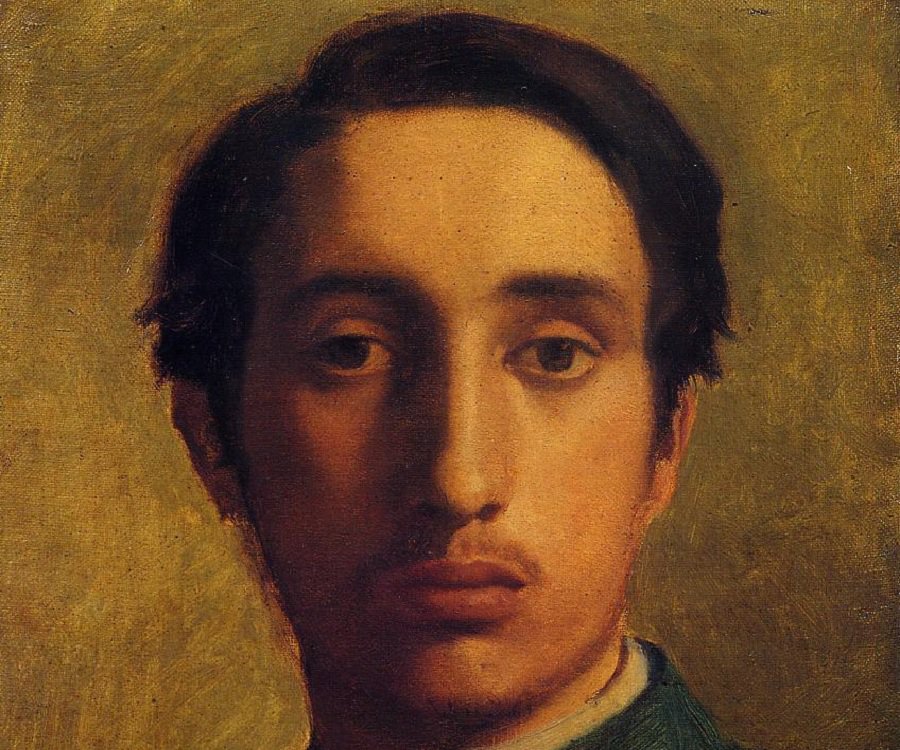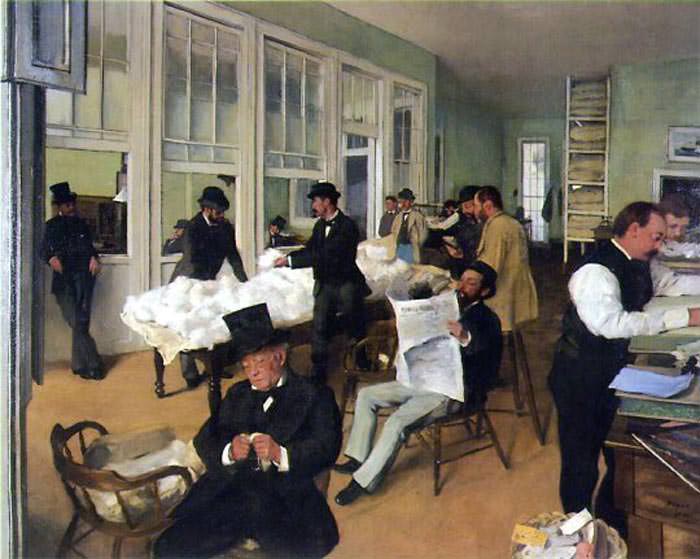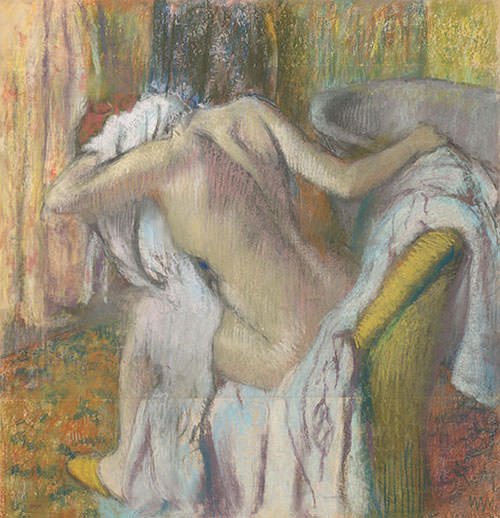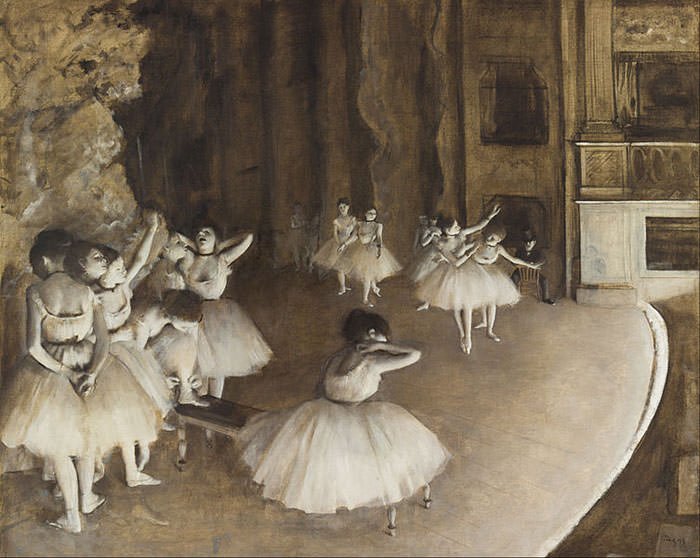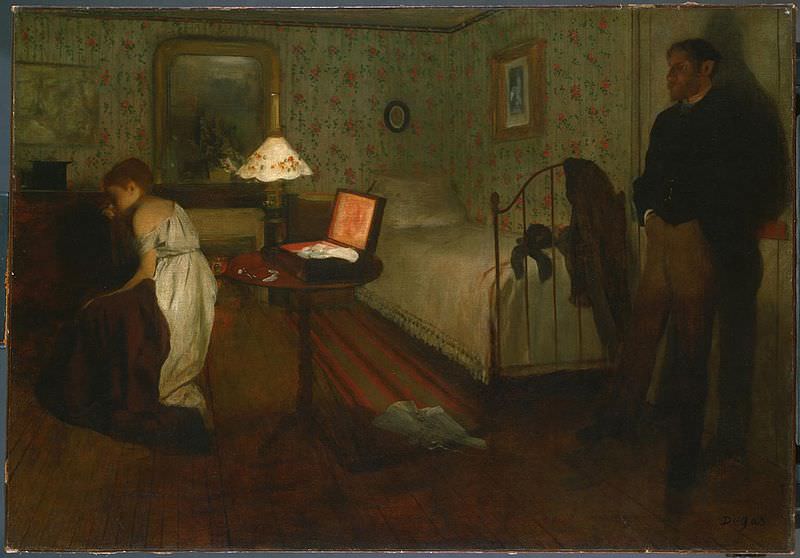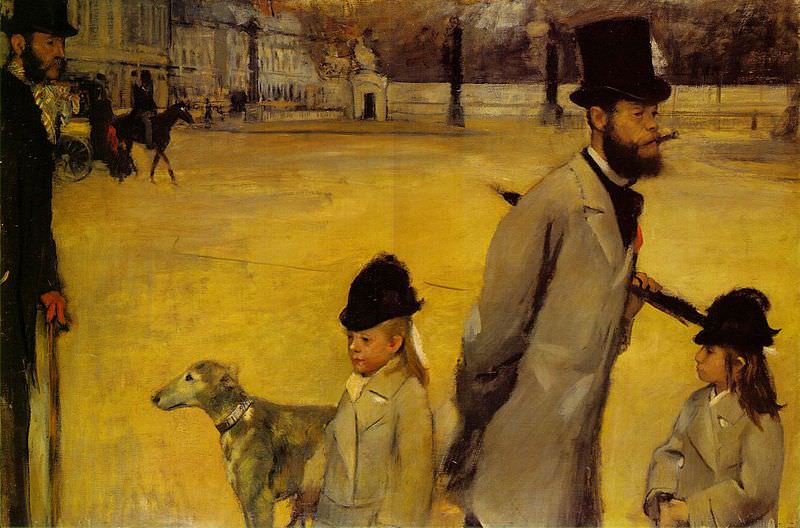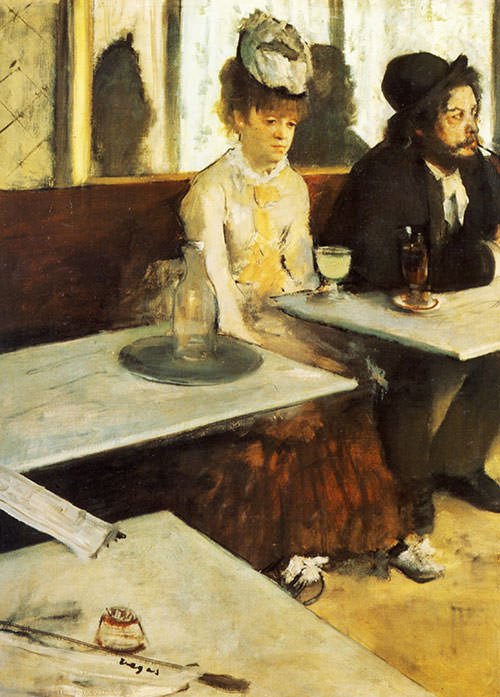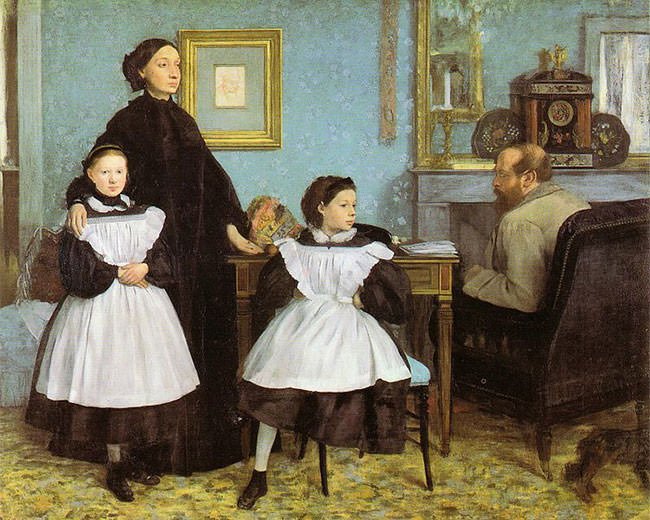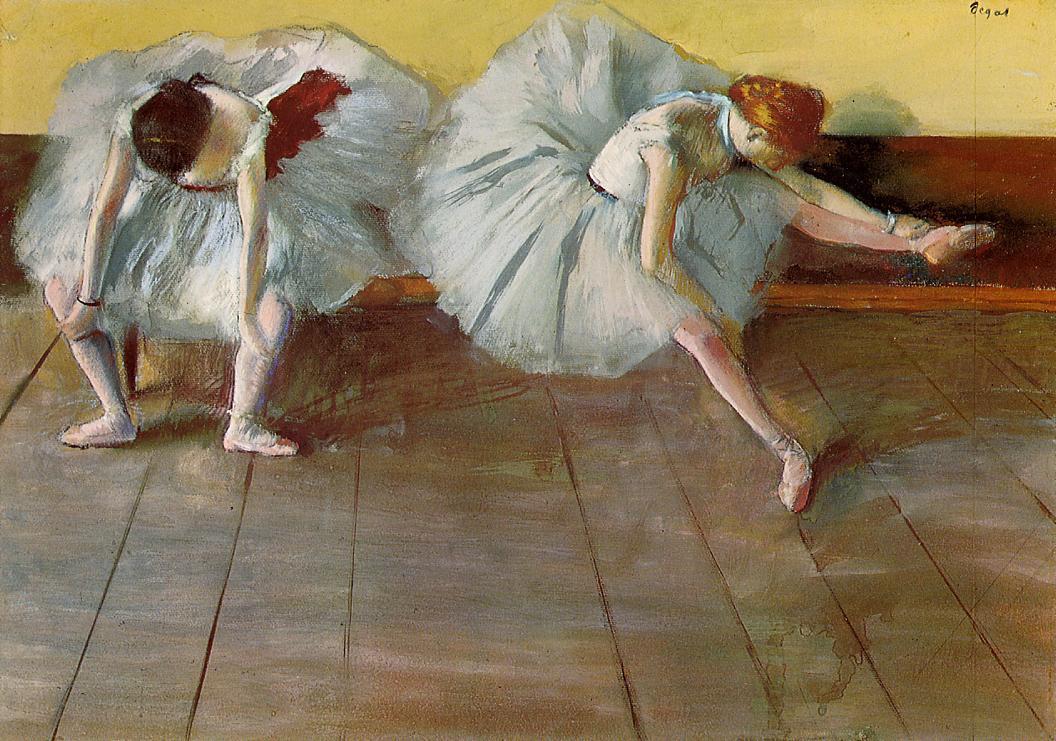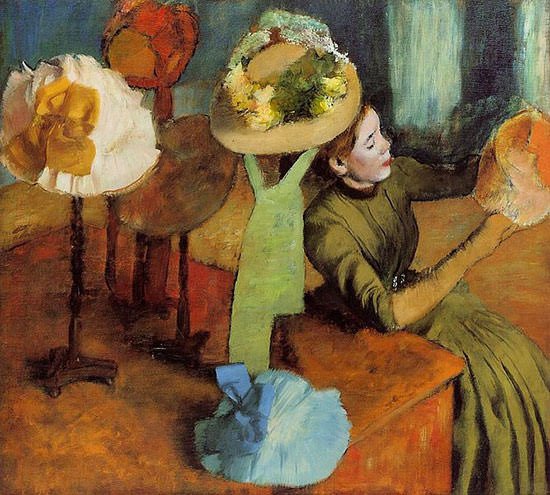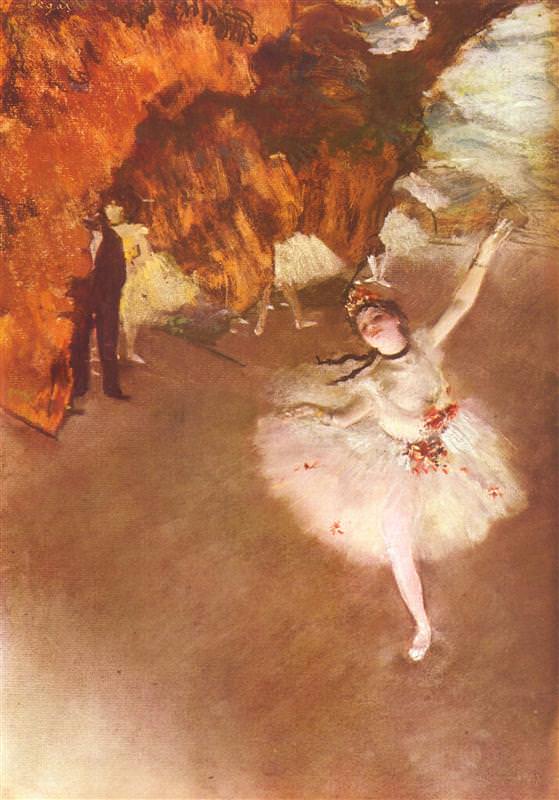- Overview
-
Edgar Degas was a French artist famous for his paintings, sculptures, prints, and drawings. He is especially identified with the subject of dance; more than half of his works depict dancers. He is regarded as one of the founders of Impressionism, although he rejected the term, preferring to be called a realist. He was a superb draftsman, and particularly masterly in depicting movement, as can be seen in his rendition of dancers, racecourse subjects and female nudes. His portraits are notable for their psychological complexity and for their portrayal of human isolation.
- Career
-
- Upon his return to France in 1859, Degas moved into a Paris studio large enough to permit him to begin painting The Bellelli Family—an imposing canvas he intended for exhibition in the Salon, although it remained unfinished until 1867. He also began work on several history paintings: Alexander and Bucephalus and The Daughter of Jephthah in 1859–60; Sémiramis Building Babylon in 1860; and Young Spartans around 1860.
- He exhibited at the Salon for the first time in 1865, when the jury accepted his painting Scene of War in the Middle Ages, which attracted little attention. Although he exhibited annually in the Salon during the next five years, he submitted no more history paintings, and his Steeplechase—The Fallen Jockey (Salon of 1866) signaled his growing commitment to contemporary subject matter.
- Degas produced a number of works, many depicting family members. One of Degas's New Orleans works, A Cotton Office in New Orleans, garnered favorable attention back in France, and was his only work purchased by a museum (the Pau) during his lifetime.
- Upon his return to France in 1859, Degas moved into a Paris studio large enough to permit him to begin painting The Bellelli Family—an imposing canvas he intended for exhibition in the Salon, although it remained unfinished until 1867. He also began work on several history paintings: Alexander and Bucephalus and The Daughter of Jephthah in 1859–60; Sémiramis Building Babylon in 1860; and Young Spartans around 1860.
- Legacy
-
During his life, public reception of Degas's work ranged from admiration to contempt. As a promising artist in the conventional mode, Degas had a number of paintings accepted in the Salon between 1865 and 1870.
Degas's work was controversial, but was generally admired for its draftsmanship. His La Petite Danseuse de Quatorze Ans, or Little Dancer of Fourteen Years, which he displayed at the sixth Impressionist exhibition in 1881, was probably his most controversial piece; some critics decried what they thought its "appalling ugliness" while others saw in it a "blossoming".
Recognized as an important artist in his lifetime, Degas is now considered "one of the founders of Impressionism". Though his work crossed many stylistic boundaries, his involvement with the other major figures of Impressionism and their exhibitions, his dynamic paintings and sketches of everyday life and activities, and his bold color experiments, served to finally tie him to the Impressionist movement as one of its greatest artists.
Degas's paintings, pastels, drawings, and sculptures are on prominent display in many museums, and have been the subject of many museum exhibitions and retrospectives.
- On View
-
- National Gallery of Art East Building, Washington D.C.
- Musee d'Orsay, Paris
- Art Institute of Chicago
- Detroit Institute of Arts, Detroit
- Rijksmuseum, Amsterdam
- Los Angeles County Museum of Art
- Museum of Fine Arts, Boston
- Metropolitan Museum of Art, New York City
- National Gallery, London
- Princeton University Art Museum, Princeton
- Tokyo Fuji Art Museum, Hachioji
- Hermitage Museum, Saint Petersburg
- British Museum, London
- Isabella Stewart Gardner Museum, Boston
- Philadelphia Museum of Art
- Brooklyn Museum, New York City
- Beyeler Foundation, Riehen
- Corcoran Gallery of Art, Washington D.C.
- Burrell Collection, Glasgow
- The Phillips Collection, Washington D.C.
- Israel Museum, Jerusalem
- Museum of Fine Arts of Lyon
- Morgan Library Museum, New York City
- Nasher Sculpture Center, Dallas
- Stadel Museum, Frankfurt
- Toledo Museum of Art, Toledo
- Albertinum, Dresden
- National Gallery of Denmark, Copenhagen
- Museum of Fine Arts, Houston
- Foundation E.G. Buhrle, Zurich
- Pushkin Museum, Moscow
- The Kreeger Museum

